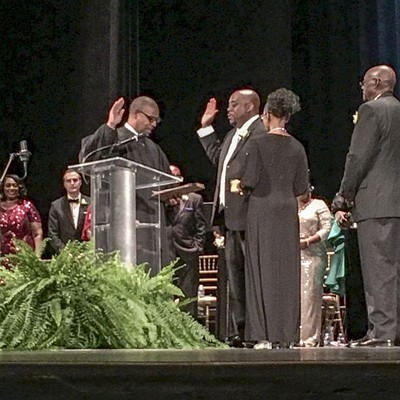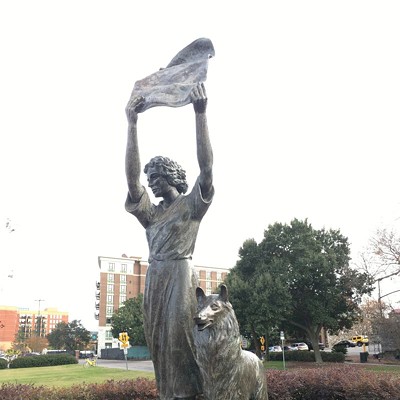THE DRAMA of Savannah’s new Fire Fee continued over the past week as more details became clear about the controversial measure.
First off: Now that we’re able to actually run some numbers, the Fire Fee appears to be less of a fee after all, but more like an insidious form of regressive tax.
A regressive tax, as opposed to a progressive tax like the federal income tax, is one that’s proportionately easier the more money you make or the more your property is worth. A sales tax, for example, is a type of regressive tax.
(Adding to the confusion is the fact that the Fee will show up on property tax bills.)
Here’s the thing: Because the City bundled the Fire Fee with a one-mill rollback of property tax—equal to roughly eight percent — some affluent homeowners will actually get a tax cut out of the whole deal.
While, you guessed it, those closer to the bottom will carry even more of the burden.
Sound familiar?
I spoke with Nick Palumbo, president of the Ardsley Park/Chatham Crescent Neighborhood Association about the Fire Fee, which he has energetically opposed.
Nick ran the numbers and thinks he’s found the “tipping point” over which the new Fire Fee turns into a de facto homeowner tax cut.
If his numbers are right — and they seem to check out — the magic number is a fair market value of exactly $640,000.
At that value, there’s zero change. Under that, you pay out a net increase. Over that, you begin to see a net decrease in payment.
You do the math: Take 40 percent of $640,000 (the assessed percentage of property value) multiplied first by the “old” millage rate of 12.48 (.01248). Set that number aside, then multiply the 40 percent value by the new millage rate of 11.48 (.01148). Add the standard household $256 Fire Fee. Subtract the latter total from the former. In this example you get no change.
Here’s a more specific example:
Mayor Eddie DeLoach’s home in Ardsley Park is listed by the Board of Assessors at a fair market value of $802,700 for 2017.
Even after paying the Fee, the Mayor —who in supporting the Fee told us “the cupboard is bare” — looks like he might now get a small tax cut of about $349.
And to be fair, the Mayor’s home isn’t anywhere near one of the most valuable in Savannah or even in Ardsley Park.
Meanwhile, modest homes in more modest neighborhoods will see a net increase in outlay, even with the rollback.
The City counters that a fund of about a half-million dollars has been set up to relieve low-income homeowners. That’s admirable, but a half-million dollars isn’t nearly enough to mitigate the impact on all City homes negatively affected.
The vast majority of us will get neither a tax cut nor access to low-income relief.
“If the goal of the Fire Fee was to get all entities to ‘pay their fair share,’ so be it. Let’s find a way to do that,” Palumbo says.
“But the current arrangement hurts those of less means the most and renders a tax cut to the wealthiest residents.”
The Fire Fee could also cause a potentially crushing burden on some commercial property and nonprofits, the latter of which can’t enjoy the tax rollback.
Ben Gosden is the pastor of Trinity United Methodist Church on Telfair Square. He figures Trinity UMC will have to pay as much as $5000 extra per year.
The formula for non-residential property is even more complicated:
Divide your total commercial or nonprofit square footage by 1700. Multiply that number (up to a maximum of 49) by a multiplier based on the fire safety specifics of the building, ranging from .2 to 1.5. Multiply that by the base Fire Fee of $256.
Got it?
(According to some interpretations, the Fire Fee might also apply to... wait for it... parking lots.)
While Gosden disagreed with his Alderman Bill Durrence’s support of the Fee, he says Durrence did take the time to send what Gosden calls a thoughtful, well-reasoned response to his concerns.
As you might expect from a clergyman, Gosden has a broader view:
“I’m all for firefighters getting all the support and funding they need. But government’s main function is to provide safety and protection for its citizens. When that permanent role is passed on to citizens, the government is shirking its primary duty onto the rest of us,” he says.
To be fair, plenty of other municipalities and areas in Chatham County have for many years charged a fire subscription.
But Gosden and other critics say Savannah’s case is different: The City is burdening citizens with a new fee because of its own past financial mismanagement.
Gosden says the Fire Fee will particularly impact houses of worship in an era of declining attendance for many.
“Some of these churches in town were originally built for, say, 800 or 1000 people to attend, but their congregations might be down to 200 or even less today,” he says. “Many donor bases are shrinking.”
Churches are also at a huge disadvantage because A) they usually own, not rent; and B) tend to require high square footages.
Gosden says his church has already signed up for a City workshop enabling nonprofit attendees to get a discount.
For commercial property, the City maintains that the Fire Fee for a “typical” retail establishment of under 3,580 square feet will come in at about $540 a year, the “typical” restaurant at about $740 per year.
Retail and food/beverage of course have notoriously thin profit margins already.
The City says the typical big box retail store will pay over $15,000 per year, a downtown hotel over $12,000.
All these costs will inevitably be passed on to consumers.
The real elephant in the room is the Fire Fee’s impact on Savannah-Chatham County Public Schools and its enormous volume of square footage.
The City itself says most schools would pay over $11,000 each per year! That collective cost will at some point almost certainly result in increased school taxes.
The Fire Fee is unfortunately a done deal. But it also looks like even more of a bad deal for most of us.






























